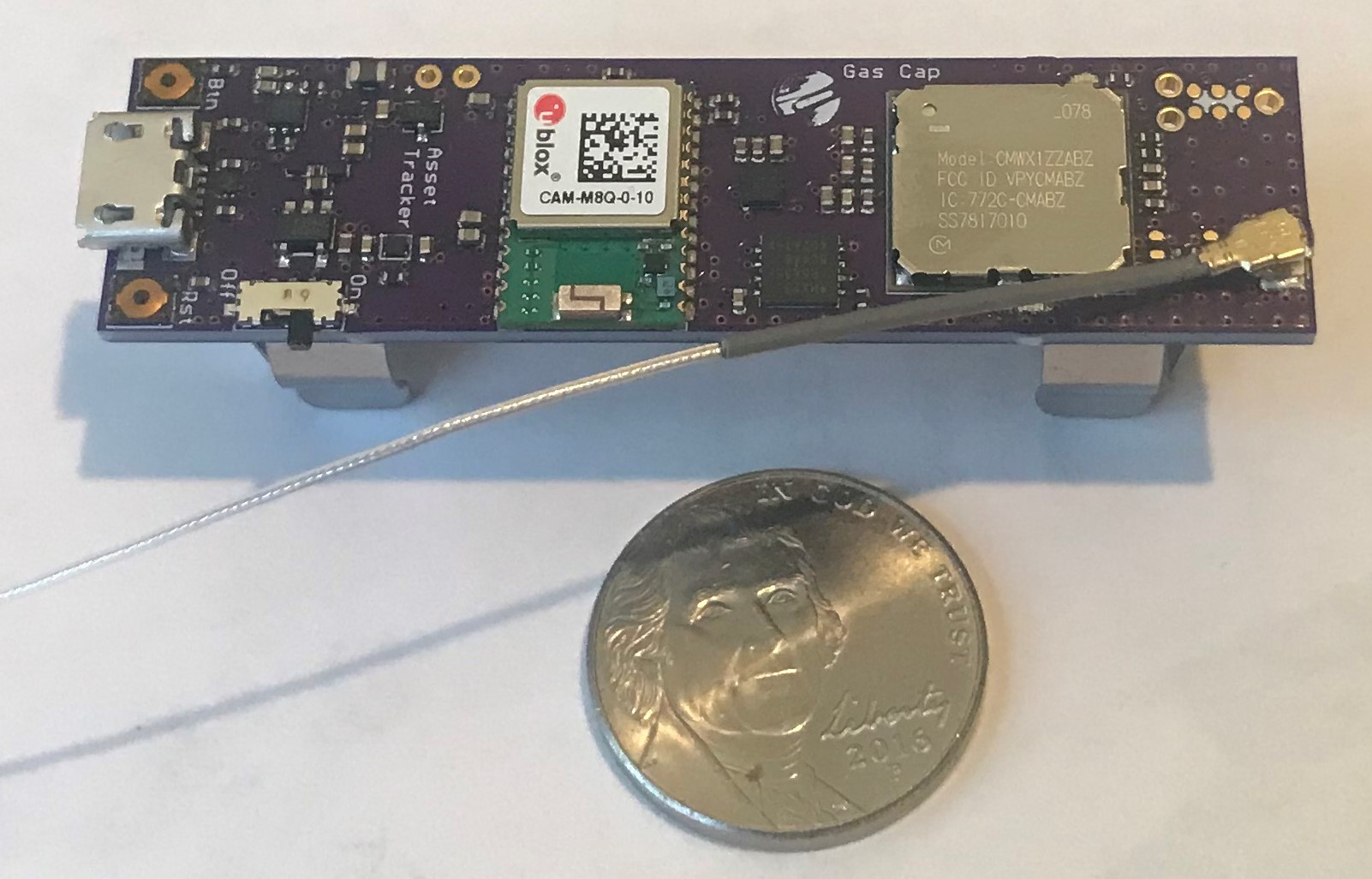Asset tracking of animals (esp. birds) isn’t easy. I continue to refine my designs for this purpose to reduce weight and/or improve the form factor. This is my latest device:

It is designed to make use of an AA-size battery. This version has a boost converter for using alkaline batteries but I found this too noisy so removed it on the next. It is 7.1 g without battery (maybe a bit less w/o the AA battery holders): For cow or horse tracking, etc this is much cheaper, smaller, and lighter than most other solutions; a 3.6 V LiSOCl2 battery can last many months or even a year depending on duty cycle. The advantage here is there is no need for an external GNSS patch antenna since the CAM M8Q even with just a 16 mm x 62 mm pcb ground plane is surprisingly efficient.
For birds I would not use an AA-sized battery, of course, but a small LiPo. But then one might expect the device to last for only a few days. In my testing of the Gnat (which is very similar in power consumption) a typical fix uses ~0.5 mAH, so a 100 mAH LiPo battery would allow ~200 fixes. The battery life then depends on the duty cycle and battery size.
It turns out that there is some interest in cat tracking and of course, sea turtle tracking where this kind of solution is used in size and with success.
For smallish birds, I think such GNSS tracking might be too burdensome but the solution above could work well for raptors such as falcons and Eagles, for example.
In either case, the CMWX1ZZABZ-078 module is very hard to come by. I am working on a successor that uses the Murata Type 1 SJ module which can be sourced.
It is unlikely that any LoRaWAN-enabled GNSS tracker could be made that is smaller and lighter than these devices without costing many times the $80 Gnat price.